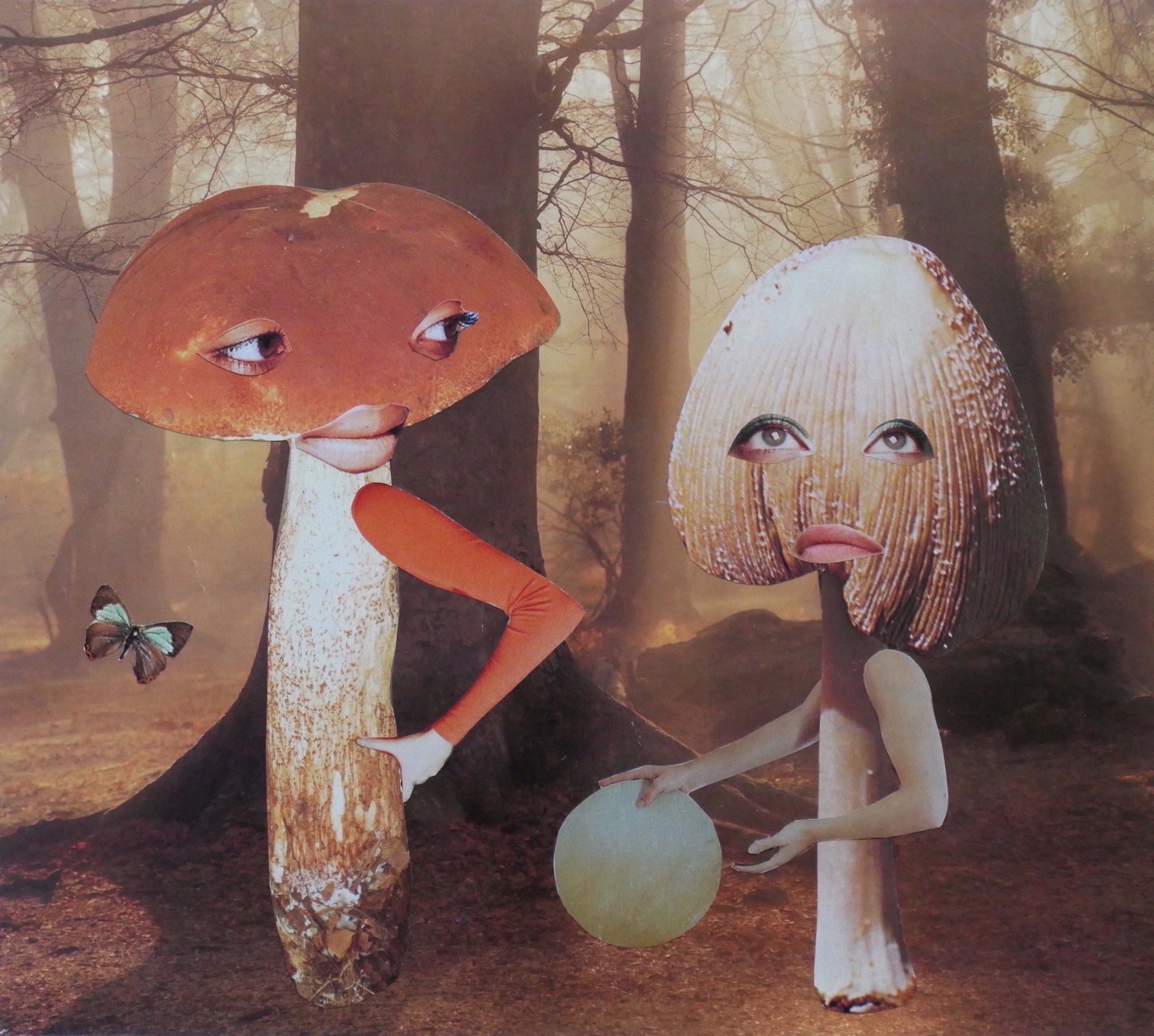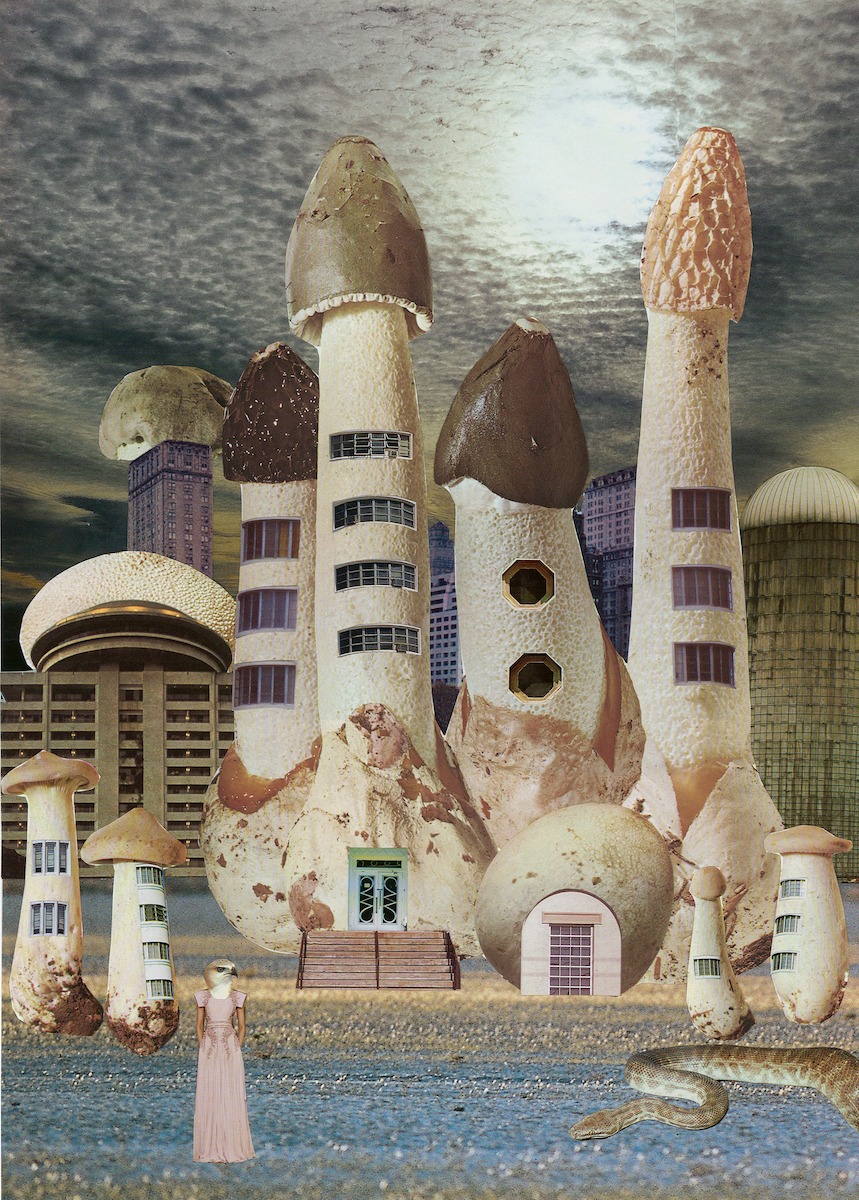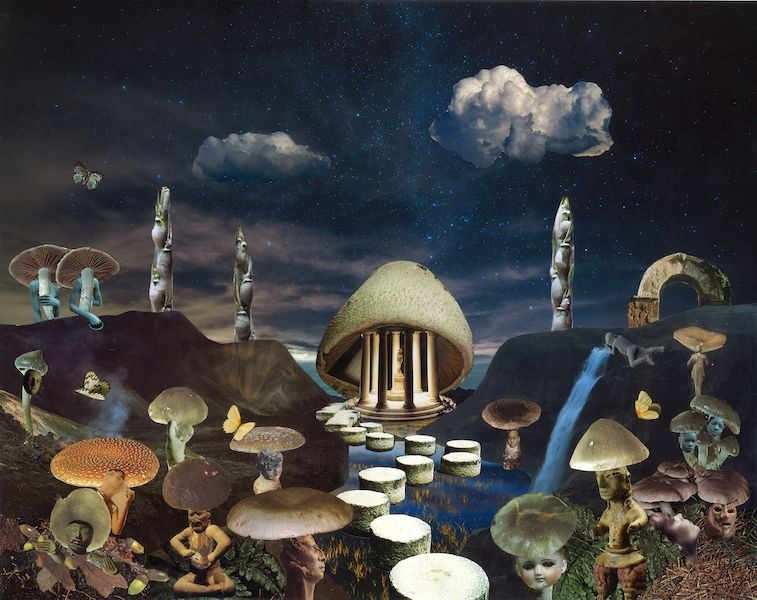
Mushrooms are everywhere – inside us and around us
Q&A with British artist Seana Gavin
On September 30th, the Nobel Prize Museum in Stockholm unveiled “Fungi – In Art and Science”, a major exhibition exploring the interactions between humans and the fungal world. The relationship between humans and fungi has spanned centuries. However, despite the scientific discoveries of recent decades regarding fungi and their role in nature, as well as their potential applications in fields ranging from the development of new pharmaceuticals to building materials and clothing, the world of fungi remains shrouded in mystery.
Exhibition view: Fungi in art and science. Seana Gavin. Photo: Jean-Baptiste Béranger 
Perhaps the symbiotic language of art and science is the best way to help us uncover the mysteries of the mycelium from diverse and unexpected angles. As we all know, mushrooms are everywhere, both within and around us, creating a genuinely interconnected world. In a way, we humans are a part of the mycelium as well, and therefore, mushrooms can serve as invaluable guides and teachers, offering us numerous insights and benefits.
The exhibition features Carsten Höller’s sculptures of fly agarics placed next to Anna Dumitriu and Alex May’s artistic manipulations of yeast. Visitors can experience the monumental video installation Sanctuary of the Unseen Forest by Marshmallow Laser Feast, next to illustrator Joanna Hellgren’s newly created comics. Furthermore, visitors can enter the literary world of Nobel Prize laureate Olga Tokarczuk, a world teeming with mushrooms, and gain new insights into the working methods of Nobel Prize laureate Alexander Fleming. During the 1920s, he discovered that certain bacteria ceased to grow when exposed to a specific mold, a type of fungus. This pivotal discovery later led to the development of penicillin.
The exhibition also includes collages by the British artist Seana Gavin, which have, in a way, become a hallmark of this time and of our multifaceted relationship with the mushroom world. Arterritory.com presents a short interview with the artist.
Exhibition view: Fungi in art and science. Seana Gavin
What continues to fascinate you about fungi – as an artist and as a human being?
As an artist I have always been attracted to them aesthetically, and have found their endless variety of forms fascinating. I have heard there are 120,000 classified types of fungi! Their colours, shapes and textures are so visually inspiring. Since I started to create my collage artworks in 2009, I have regularly included mushrooms in these other-worldly scenes, as I associate them with fairy tales and retro science-fiction films I saw as a child.
I also felt there was something special about them beyond their appearance. They are the symbol of the circle of life and associated with rebirth. They have a connection with everything. The more I find out about them, the more they amaze me. They are everywhere – inside us and around us. I find it incredible how the mycelium material beneath the ground creates a connecting network between tree roots to enable them to communicate and share nutrients and information with each other.
And currently, the scientific and design worlds are using mushrooms and fungi for ecological and sustainable purposes, which is an amazing breakthrough. Their endless health benefits astound me, and they are now being used as an alternative material to plastic and leather. So, I feel they were clearly put on this earth to help and benefit humans in so many ways.
Exhibition view: Fungi in art and science. Seana Gavin
Humans and fungi have coexisted for millennia. They inhabit us as part of our microbiota, which makes up 57% of our body mass. We know that the mycelial network is real; it is the communication infrastructure of the forest. But maybe we humans are also involved – could we be part of an extremely hyper-advanced fungal/plant intelligence?
That’s an interesting thought. Maybe this is subconsciously why I make artworks where mushrooms have human elements such as faces and arms. Because we are actually somehow connected to them. The more I studied mushrooms, the more I started to see them as similar to people with different personalities, shapes and skin tones. That’s when I began an ongoing series of mushroom portraits. I think people really connect to them because subconsciously they are attracted to the familiarity of something that looks human.
One of the questions brought into the spotlight by the current psychedelic renaissance is – are we using psychedelic plants, or are they using us? What is your opinion regarding magic mushrooms?
I think they can be beneficial to some people for therapeutic purposes with controlled doses. And it has been said that micro-dosing can boost your mood and creativity. But they can also be extremely powerful if abused and misused. Not everyone will have a good time experimenting with psychedelics. It may surprise some people to hear this, but I fit into that category. Unfortunately, I discovered acid at a very young age and only had bad trips. But I always felt that if I began with mushrooms, as they are part of the natural world, I would have a more positive experience. These psychedelic experiences probably opened up my imagination and had an influence on my work. But it is not something that I have played around with since I was a teenager.
Psilocybe mushrooms facilitate states that create deeper connections to our inner selves and to nature as a whole; frequently the afterglow of these experiences make people more empathetic – towards each other and nature. Could this be the way to prepare us for the next stage of evolution?
Perhaps. They have been used by humans throughout history – for healing, religious communion and divination – from pre-Columbian times to the present day. And some historians believe that magic mushrooms may have been used as far back as 9000 B.C. in North American indigenous cultures, based on mushroom forms seen on rock paintings. Perhaps, as long as they are still growing in the soil, they are intended to be used for these purposes, from the past to our future lives.
Looking at the symbiosis of our coevolution with fungi, have you ever thought about what could be their evolutionary goal?
As I’m an artist and not a scientist, it’s not something that I have analyzed. My initial interest with them was more instinctive and from a visual perspective.
Exhibition view: Fungi in art and science. Seana Gavin. Photo: Jean-Baptiste Béranger 
Have you ever felt as an ambassador from the world of fungi?
Not intentionally. But in the past few years my work has become associated with fungi and mushrooms after being shown in very popular exhibitions on the theme. Especially Mushrooms; The Art, Design and Future of Fungi at Somerset House in 2020. The exhibition was a huge success. Until then I had no idea how popular mushrooms were and how much interest there was around them throughout a broad spectrum of society. The show brought an extended audience to my work. And ever since I’ve been regularly asked to engage in the subject and to be involved in fungi affiliated commissions, events, projects and exhibitions.
What was the first thought that came into your mind when you were approached to have your works included in the exhibition which is happening in a such symbolic place as the Nobel Prize Museum?
I was, of course, honoured to be included in an exhibition at such a prestigious space. When you think of the words “Nobel Prize”, some impressive associations immediately come to mind.
In her book House of Day, House of Night, Nobel Prize laureate Olga Tokarczuk states: “If I wasn't a human, I would like to be a mushroom.” If you could have such a magic opportunity – for a day – what kind of mushroom you would love to be, if any?
I would be a bioluminescent mushroom because it would be an interesting experience to glow in the dark and see what I attract.
Exhibition view: Fungi in art and science. Seana Gavin
*The exhibition “Fungi – In Art and Science” is on display from 30 September 2023 to 7 January 2024.
Participating artists: Balenciaga, Daniel Del Core, Anna Dumitriu & Alex May, Seana Gavin, Joanna Hellgren, Carsten Höller, Mae-ling Lokko, Marshmallow Laser Feast, Maurizio Montalti, Iwo Myrin, Olle Norås, Jae Rhim Lee, Phil Ross & Vera Meyer, Amanda Selinder, Lisa Schönberg & Allie ES Wist and Wim van Egmond.
Researchers: Anders Dahlberg, mycology (Swedish University of Agricultural Sciences), Henrik Drake, environmental science (Linnaeus University), Hanna Johannesson, mycology (Stockholm University/Swedish Royal Academy of Sciences), Johan Lundberg, psychiatry (Karolinska Institutet), Anna Rosling, mycology (Uppsala University) and Sven Olov Wallenstein, philosophy (Södertörn University).